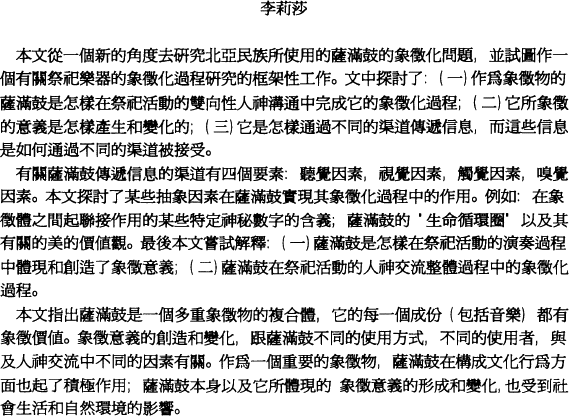Article contents
The Symbolization Process of the Shamanic Drums used by the Manchus and other Peoples in North Asia
Published online by Cambridge University Press: 07 March 2019
Extract
Shamanism in North Asia has been widely investigated by anthropologists since the last century. The symbolism of shamanic drums, in particular, has been treated by many authors from various points of view as summarized in, for example, Eliade (1964), Nowak & Durrant (1977) and Grim (1983). However, there are still many questions undiscussed or less recognized in the literature.

- Type
- Articles
- Information
- Copyright
- Copyright © 1992 by the International Council for Traditional Music
Footnotes
This article is a revised version of the paper I read at the 31st ICTM World Conference, Hong Kong, 1991. It is based on my M.Phil. thesis in Oxford in 1989; and also the material which I discovered during my new fieldwork in Manchuria, China, in 1990 and 1991. The scope of drums considered here includes those used by the native peoples in Manchuria, Siberia and Mongolia, especially the Tungus language groups.
My gratitude is to my supervisors Dr. H. La Rue, Dr. H. Morphy and Dr. C. Humphrey, and all tutors in the Pitt Rivers Museum, Oxford University, for their supervision of my ethnomusicological and anthropological studies; to Prof. B. Yung, the editor, for his useful suggestions which enabled me to improve the paper; to St. Hugh's College of Oxford University, the Mongolia & Inner Asia Studies Unit of Cambridge University and other trusts for their financial help which enabled me to do my research and field investigations; to the Chinese anthropologist, Fu Yuguang, for his translation of Manchu myths and texts into Chinese, and to all the shamans and other informants whom I met, for their great help in providing valuable evidence for this study.
References
References Cited
- 2
- Cited by




